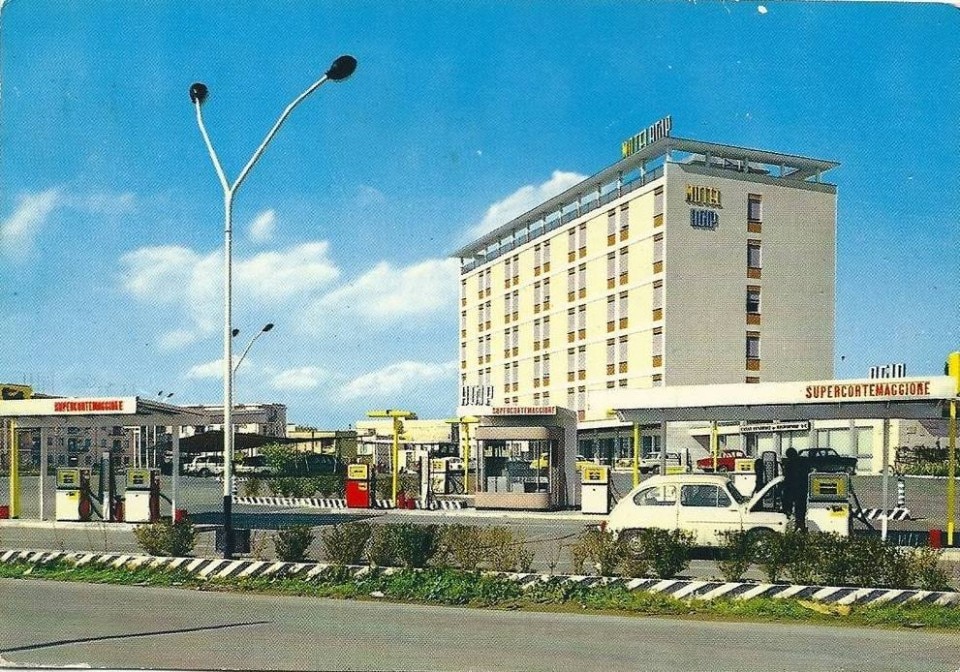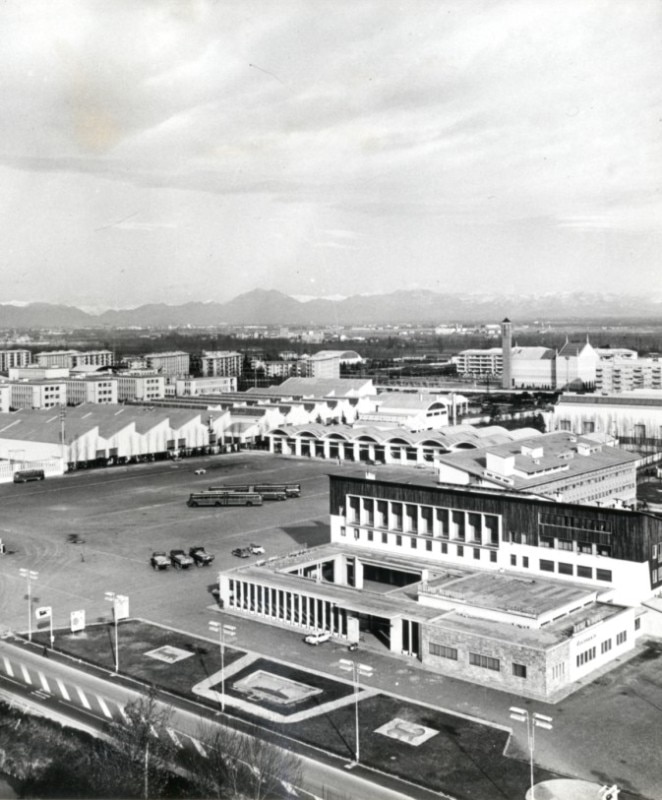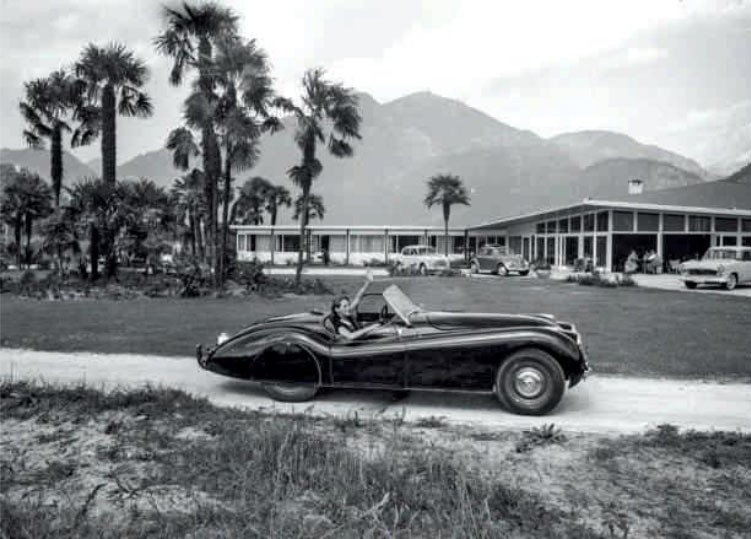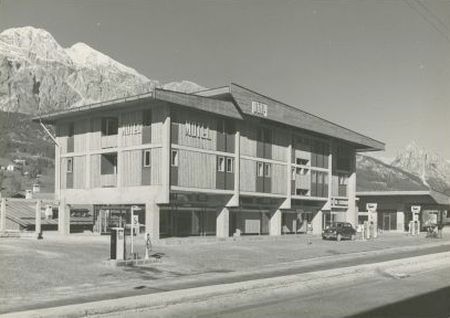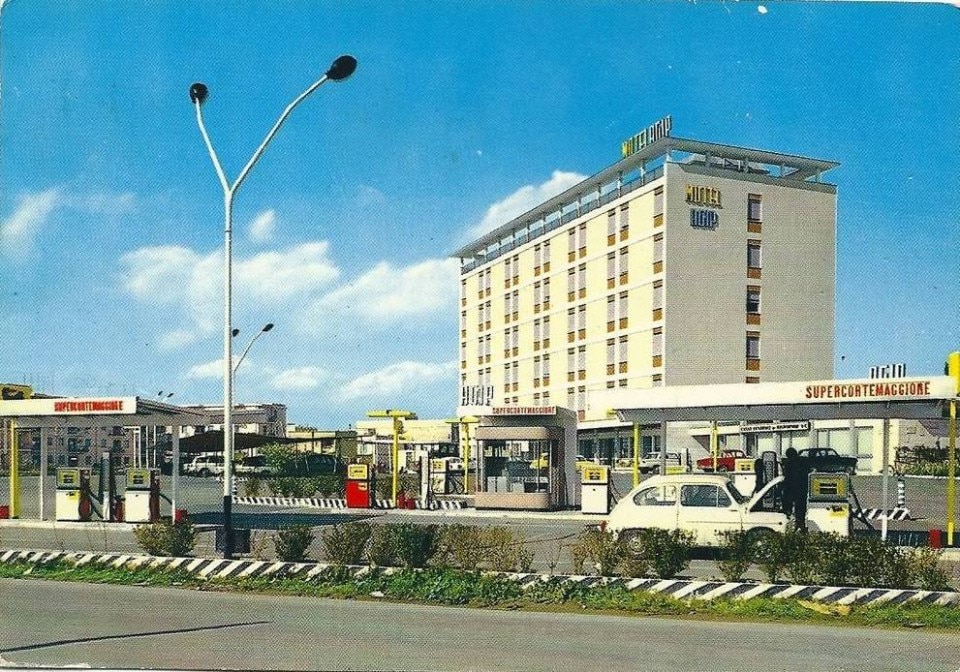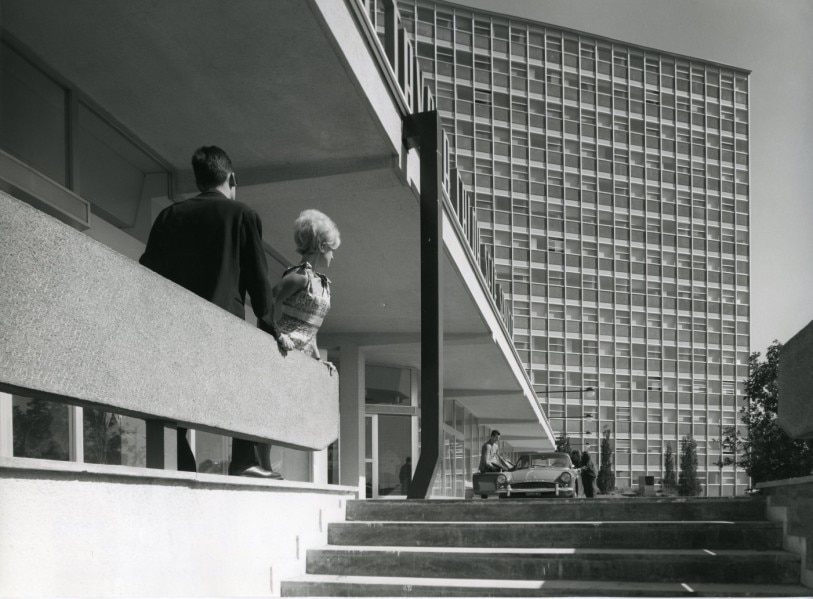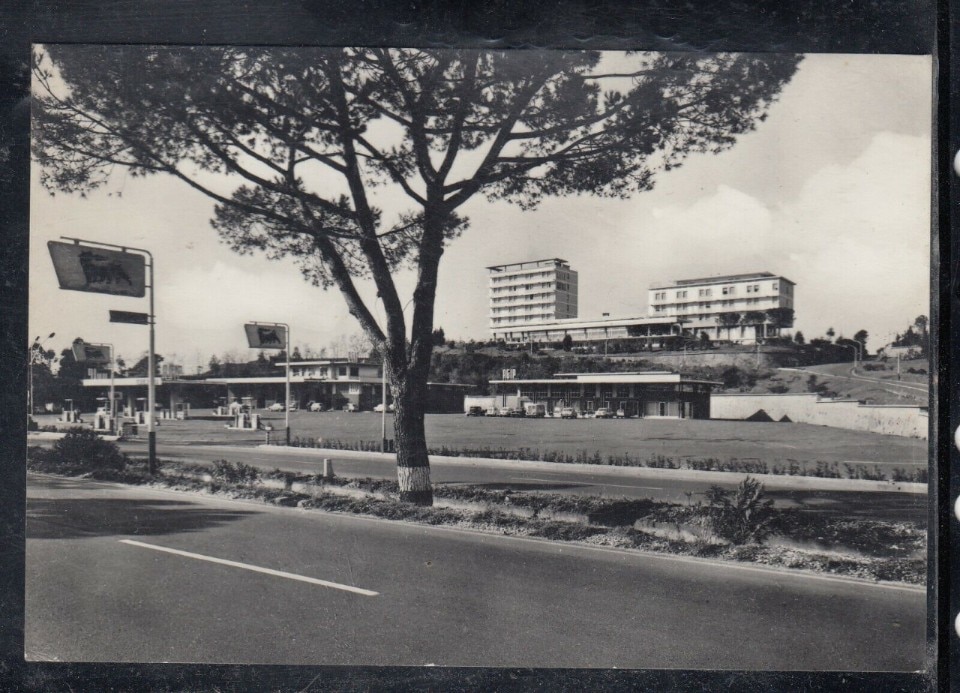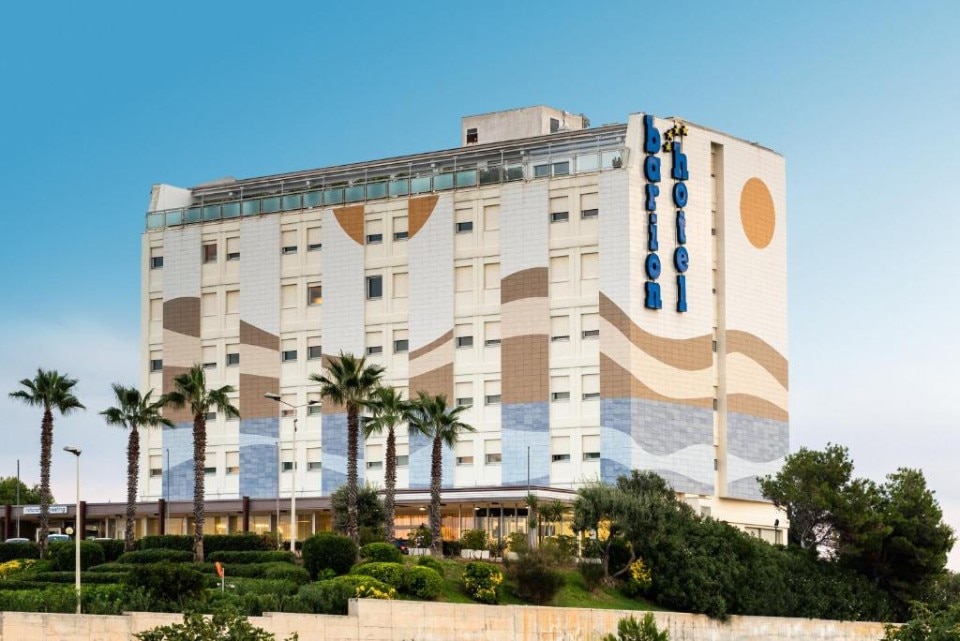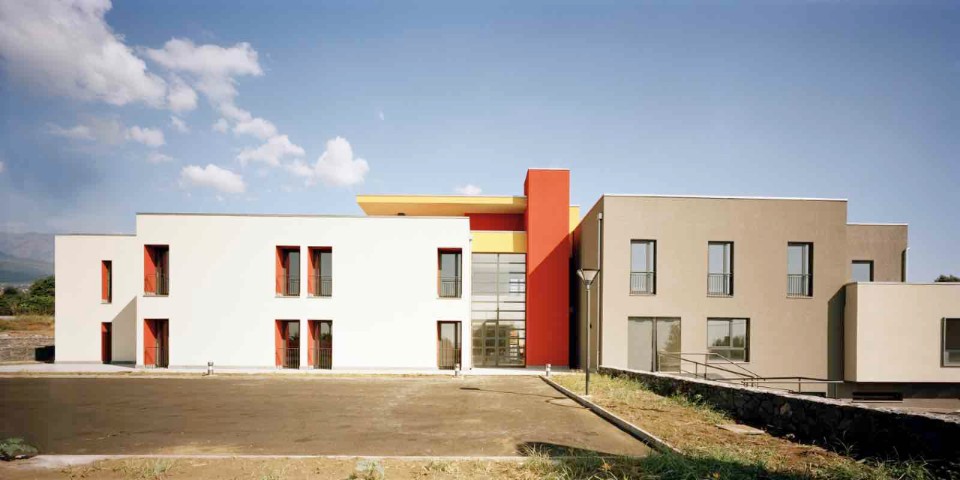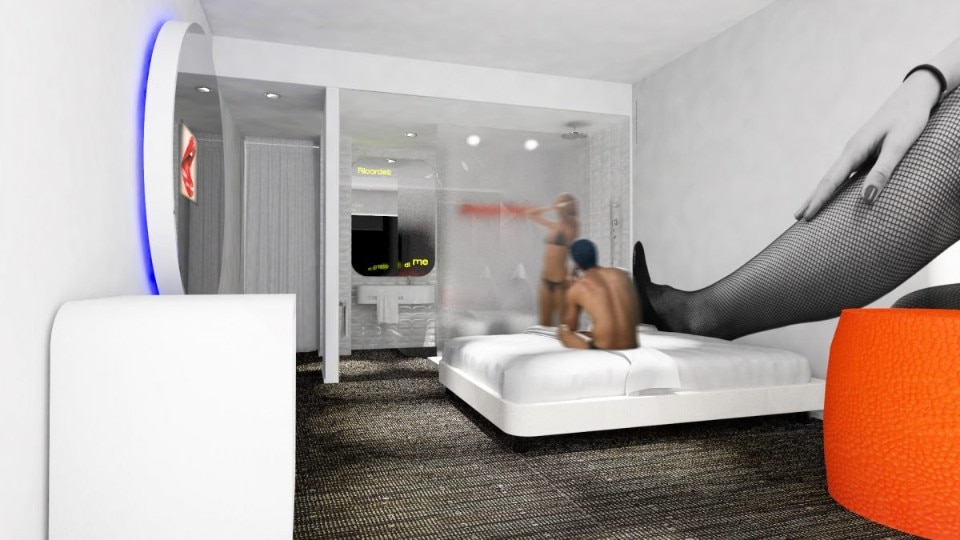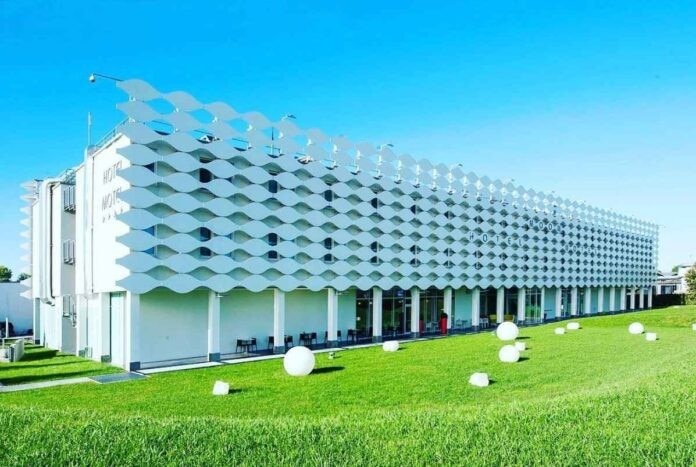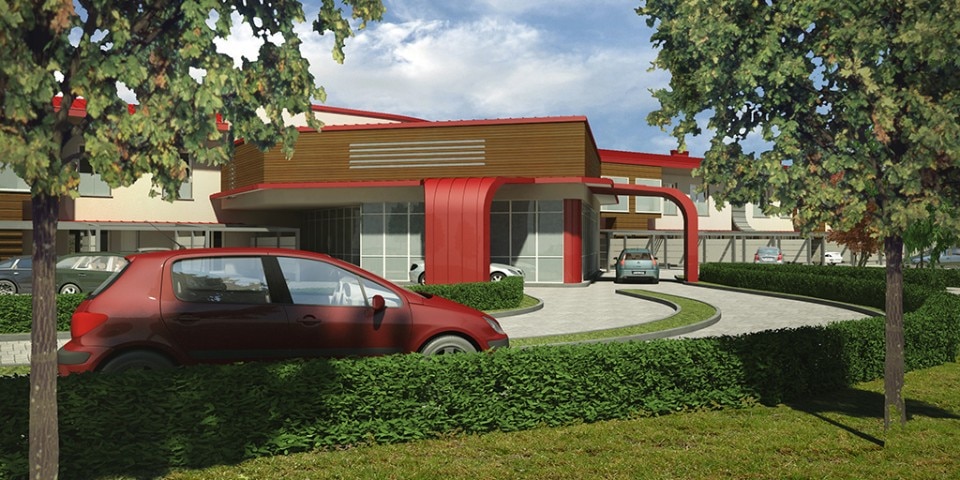In the country of the “economic miracle”, immortalized by films such as Dino Risi’s Il Sorpasso, imersed in the growing optimism of out-of-town vacations – thanks partly to policies encouraging private motorization – a new type of accommodation began to spread in the mid-1950s: the motel, which originated from the American “Motorist’s Hotel” – inaugurated in the United States thirty years earlier – offering to road travelers, in addition to a full tank of gasoline, the usual hotel services, at affordable prices, and often directly accessible from a parking lot.
The entrepreneur who introduced and popularized motels in Italy was Enrico Mattei. With Agip and the Società Esercizio Motel Italia SpA (SEMI), he created the Agip Motels that soon became iconic landmarks for motorcyclists and motorists along all the main national high-speed traffic axes: minimal but welcoming structures, distinguished by efficient, low-cost construction technologies (such as prefabrication), clearly identifiable by their projecting gas station roofs and lighted signs featuring the six-legged dog logo on a yellow background.
From being a resting place for commuters and families, steeped in the American dream and the rhetoric of industrial paternalism, over time the motel became enriched with a more multifaceted iconography, becoming in the collective imagination the conventional setting for elopements and fleeting affairs.
Repeatedly neglected by architectural critics as merely prosaic and functional constructions – except recent historiographic rediscoveries – motels represent an important customary phenomenon that helped, among other things, to set in motion and accelerate the tourist machine of the Belpaese. From the earliest historical examples, still in operation (the Agip Motels in S. Donato Milanese, Rome, Gela, Bari) or awaiting transformation (Cortina d’Ampezzo), to more recent interventions (Scau studio in Catania, Micheli in Varese, Riboli in Milan, Studio Pilli in Novara), motels keep the fascination of the escape. Or alternatively, for its detractors, they keep on being the disenchanted and depressing representation of a transient “non-place”, the land of hasty and cheap consumerism.


